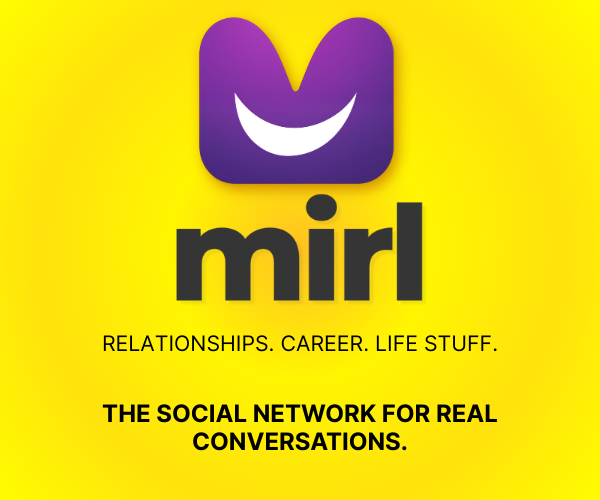Silent Treatment in a Relationship: Why It Hurts & 37 Must-Knows to Handle It

Silent treatment in a relationship can be a complex maze. Explore ways to break the silence and foster understanding between you and your partner.
The silent treatment in a relationship is a phenomenon that almost everyone has encountered at one time or another. It’s that unsettling moment when communication ceases, and all that’s left is a void filled with uncertainty, frustration, and confusion. The silence may begin as a trivial response to an argument or misunderstanding, but it can quickly snowball into a defining aspect of the relationship.
Imagine you’re in the middle of a lively conversation, and suddenly, someone hits the mute button on the TV remote. All the noise, the chatter, the connection is abruptly cut off, leaving a jarring silence in its wake.
That’s what the silent treatment in a relationship can feel like. The emotional remote has been clicked, and you’re left to decipher the static.
It’s as if the other person has vanished into thin air, and you’re left talking to a wall, figuratively, and sometimes, literally.
But what drives a person to resort to silent treatment in a relationship? Is it a sign of control, a cry for attention, or a means of self-preservation? What does it mean for the person on the receiving end, and how does it affect the overall dynamics of the relationship?
Giving someone the silent treatment in a relationship can feel like a temporary solution to a problem, a way to gain the upper hand, or simply a method to avoid confrontation.
But more often than not, it leads to a breakdown of trust and a sense of emotional abandonment.
The problem with silence, as you’ll soon discover in this exploration, is that it speaks volumes. It creates a barrier thicker than words and resonates louder than any argument.
The Psychology Behind Silent Treatment
Silence, in its simplest form, is the absence of sound. But in the context of a relationship, silence can become a complex, multi-faceted weapon, a shield, or even a cry for help.
The psychology behind the silent treatment digs into the roots of human behavior, emotions, and communication. It’s more than just a refusal to talk; it’s a window into a world of underlying issues and unspoken feelings.
1. Emotional Warfare
The silent treatment is often a form of passive-aggressive behavior, where unexpressed emotions and resentment build up.
Instead of voicing their feelings, a person may choose to withhold them, creating a tense battleground where words are replaced by silence.
This emotional warfare can create an invisible barrier that’s difficult to penetrate and even harder to dismantle.
2. Control and Power Dynamics
Silence can be wielded like a sword, used to gain control or exert power over another. It’s a manipulative tool that can be both subtle and devastating.
By understanding psychological theories like operant conditioning, we can see how silence becomes a method of reinforcing certain behaviors, rewarding compliance with attention, or punishing dissent with cold, impenetrable silence.
[Read: Power struggles in a relationship: 19 signs & ways to overcome it]
3. Attachment Styles
Our attachment styles, whether secure, anxious, or avoidant, play a critical role in how we communicate and react in relationships. These styles are formed early in life and can influence how we approach conflict, including the use of silent treatment in a relationship.
For example, an avoidant person might retreat into silence as a way to maintain distance, while an anxious person might use silence to seek reassurance or provoke a response.
4. Impact on Mental Health
The silent treatment in a relationship is more than a mere communication tactic. It’s a behavior that can have profound implications on mental well-being.
Those involved may experience feelings of guilt, anxiety, rejection, confusion, and even depression. This emotional turmoil isn’t just anecdotal; it’s supported by scientific research.
For example, one study found that silent treatment can affect brain function, particularly in areas responsible for social connection and empathy.
Understanding the mental health impact of silent treatment in a relationship illuminates the urgent need for empathy, communication, and self-awareness in how we interact with those closest to us.
It’s not just a simple pause in the conversation. The silent treatment can be a pause in the emotional well-being of the relationship itself, one that we should strive to avoid or overcome.
Giving the Silent Treatment Speaks Volumes About Your Characters
If actions speak louder than words, then silence can be deafening. When it comes to relationships, giving the silent treatment may say more about your character than you realize.
It’s a complex dance between personal feelings, social norms, and psychological theories. Let’s explore how this muted behavior can paint a vivid picture of who you might be:
1. Maturity Level (Or Lack Thereof!)
Resorting to the silent treatment may reflect an inability to communicate openly or maturely. It’s like the adult version of sticking your fingers in your ears and humming loudly.
Funny? Perhaps. Effective? Not so much.
[Read: How to be mature: 25 ways to grow up & face life like an adult]
2. Empathy and Consideration
Ignoring someone’s feelings or needs can signal a lack of empathy or consideration for others.
Psychological theories like the Theory of Mind (ToM) delve into our ability to understand others’ mental states, a skill that can be sorely lacking when silence reigns.
3. Relationship Dynamics
Silent treatment isn’t just about personal character; it affects relationship dynamics, impacting trust, intimacy, and overall satisfaction.
Social Exchange Theory and Equity Theory provide lenses through which we can understand how silence may alter the balance and harmony within a relationship.
The silent treatment might seem like a minor hiccup in the grand scheme of a relationship, but it can be a telling sign of underlying personality traits and relational dynamics. It’s a whisper in the quiet that may tell us more than any shout or scream.
Effects of Silent Treatment in a Relationship
Often dismissed as a harmless way to “cool off,” silent treatment in a relationship can have effects that are anything but silent.
They scream through the emotional landscape of a relationship, leaving trails of confusion, frustration, and hurt.
We’ll unravel the seemingly noiseless storm of the silent treatment and explore the profound impacts it can have on a relationship.
1. Emotional Strain
Silent treatment in a relationship can create a significant emotional toll on both partners. It can lead to feelings of rejection, isolation, and confusion.
This emotional turbulence often amplifies the original issue, causing further misunderstandings.
2. Erosion of Trust
Trust is a foundational element of any relationship, and silent treatment can chip away at it. By shutting down communication, it fosters uncertainty and suspicion, which can weaken the trust that has been built over time.
[Read: Relationship without trust: can *or should* it last?]
3. Damage to Self-Esteem
Being on the receiving end of the silent treatment can lead to self-doubt and lower self-esteem.
It sends a message that one’s feelings and thoughts are unworthy of acknowledgment, potentially leading to a diminished sense of self-worth.
4. Stunting Relationship Growth
Open communication is vital for a relationship to grow and evolve. Silent treatment stymies this growth by stifling meaningful dialogue.
It can create a stagnant environment where issues are left unresolved, hindering progression and maturation.
5. Physical Health Implications
Believe it or not, silent treatment can even affect physical health.
Research by Kiecolt-Glaser et al. (2005) has shown that marital discord, such as prolonged silent treatment, can lead to physiological changes, impacting immune function and heart health.
6. Creation of a Toxic Cycle
If left unaddressed, the silent treatment can become a repeated pattern of behavior. It can turn into a toxic cycle where silence becomes the default response to conflicts, further entrenching negative dynamics.
[Read: 20 steps to fix a toxic relationship & change before it’s too late]
7. Impact on Other Relationships
The silent treatment doesn’t only affect the relationship between the two involved.
It can spill over into relationships with friends and family, straining connections and creating an overall tense social environment.
8. Challenges in Conflict Resolution
Silence doesn’t resolve conflicts but merely suppresses them.
By avoiding open discussion, underlying issues remain unaddressed, often resurfacing later with increased intensity. It makes a true resolution and healing more challenging to achieve.
How to Address and Overcome the Silent Treatment
So, given the not-so-good effects of silent treatment in a relationship, what is the right way to break through that barrier of non-communication? Is there a magical phrase or a secret handshake that will make the words flow again?
While we might not have a magic wand, we do have some practical strategies and insights that can melt the frosty silence.
1. Communication Skills 101
It might seem like second nature, but let’s face it, it’s not always as easy as ABC or 123. Especially when you’re dealing with the cold shoulder, also known as the infamous silent treatment in a relationship.
Here’s how to break the ice.
a. Speak Your Truth
It’s essential to be honest about your feelings without attacking or blaming. This means using “I” statements like “I feel hurt when…” rather than “You always…”.
It fosters a safe space for both parties to express themselves without fear of judgment or retaliation.
b. Active Listening
This goes beyond just hearing words. It’s about understanding the emotions and meanings behind those words.
Nodding, paraphrasing, and asking follow-up questions show that you’re engaged and interested in the other person’s perspective.
c. Ask Open-Ended Questions
Instead of simple yes or no questions, use open-ended ones that require thoughtful responses.
This encourages deeper conversations and can unearth underlying issues that may be leading to silent treatment in a relationship.
[Read: 250 fun, deep relationship questions for couples to feel closer & more loved]
d. Use Humor
A well-placed joke or light-hearted comment can ease tension and open up communication channels. Just be sure it’s appropriate and won’t cause further misunderstanding.
2. Self-Reflection and Responsibility
Sometimes, it’s about looking in the mirror and asking tough questions. What role have we played in this silence? Is there something we might need to take responsibility for?
Self-reflection is not a blame game, but a path toward understanding and growth. It’s also a crucial step in healing and moving forward.
a. Identify Triggers
Understand what situations or behaviors lead to the silent treatment. Recognizing triggers can prevent recurrence and help both parties navigate them more constructively.
b. Embrace Compromise
Finding common ground that respects both partners’ feelings and needs can prevent power struggles and promote harmony. This might involve negotiation, empathy, and a willingness to see things from the other’s perspective.
c. Set Boundaries
Clearly define what behaviors are acceptable and what aren’t. Both partners should agree on these boundaries, and they should be revisited and revised as the relationship evolves. [Read: Boundaries in a relationship and 43 healthy dating rules you must set early on]
3. Foster a Supportive Environment
Fostering a space where both partners feel safe and understood can be key to breaking down the barriers of silent treatment in a relationship.
But what does it take to build this kind of relationship sanctuary? How do you cultivate trust, empathy, and open dialogue?
a. Show Appreciation
Regularly express gratitude and admiration for each other. Recognizing and celebrating positive attributes and actions strengthens the relationship’s foundation.
b. Create Safe Spaces
Encourage open and non-judgmental communication. This builds trust and makes it easier for both partners to share their thoughts and feelings, even when they’re difficult or uncomfortable.
c. Celebrate Progress
Acknowledge and reward improvements in communication and behavior. Celebrating progress, even if it’s small, can motivate continued growth and strengthen the relationship.
4. Focus on Emotional Intelligence
Understanding emotions – both yours and your partner’s – can be the flashlight in the dark alley of non-communication.
It’s about tuning in, resonating with feelings, and dancing to the emotional rhythm of your relationship.
a. Understand Emotions
Recognizing and labeling emotions can provide clarity and lead to more productive conversations. Learning to empathize with how the other person feels helps bridge the gap that silence creates.
b. Manage Reactions
Rather than reacting impulsively, taking a moment to process feelings can lead to more thoughtful responses. Emotional intelligence involves controlling reactions to foster healthier interactions.
5. Implement Conflict Resolution Techniques
Conflict resolution techniques aren’t merely buzzwords, they’re practical tools to dissect misunderstandings and build bridges of communication.
a. Choose the Right Time and Place
Addressing silent treatment requires the right setting. Finding a quiet, private space where both parties feel comfortable can set the stage for meaningful conversation.
b. Use the “Sandwich Method”
This technique involves framing a criticism or difficult topic between two positive statements. It can make the conversation feel less confrontational and more supportive.
[Read: 31 communication exercises & games for couples and secrets to feel closer]
c. Avoid Absolute Statements
Words like “always” and “never” can be triggering. Using more nuanced language facilitates a more open and less defensive discussion.
6. Reinforce Relationship Goals
Relationship goals aren’t just for social media hashtags, they’re the backbone of a strong and thriving partnership. It’s about realigning with what brought you together in the first place and what you both aspire to achieve.
Let’s focus on the bigger picture and learn how aligning goals can dissipate the silence.
a. Align on Common Goals
Remembering and reaffirming shared relationship goals can help both partners move beyond the silent treatment. It puts the focus on what unites rather than divides.
b. Build a Relationship Vision Together
Creating a shared vision for the future helps guide behavior and decisions. It can act as a compass, keeping the relationship on track even during turbulent times.
[Read: Couple goals: 58 fake & real ideas you must add to your relationship goals]
7. Practice Mindfulness and Self-Care
Mindfulness is about being present, recognizing feelings without judgment, and responding thoughtfully rather than reacting impulsively.
Self-care, on the other hand, is about nourishing yourself so that you can engage positively with your partner.
Together, these practices can help create a calm and nurturing atmosphere where silence can be replaced by understanding and empathy.
a. Mindfulness Practices
Being present in the moment and aware of feelings and thoughts can lead to more thoughtful and compassionate responses. Mindfulness exercises may assist in breaking down communication barriers.
b. Prioritize Self-Care
Taking care of oneself is essential in addressing relationship challenges. Engaging in activities that promote well-being helps create a more balanced and resilient partnership.
8. Professional Help if Needed
You’ve tried everything from heartfelt discussions to open dialogues, but the silent treatment in a relationship still persists?
Sometimes, the complexities of silence go beyond what we can manage on our own. That’s where professional help can make a difference.
It’s not about admitting defeat, it’s about seeking assistance from those trained to understand and unravel human emotions.
a. Seek Therapy or Counseling
If the silent treatment persists and is damaging the relationship, professional intervention may be necessary.
Therapists can act as neutral third parties, guiding couples through their challenges and fostering healthy communication.
b. Choose the Right Therapist
It’s crucial to find a therapist who specializes in couples’ therapy and understands the unique dynamics of your relationship. Research and consult with various professionals to find the best fit.
c. Embrace the Process
Therapy isn’t a one-and-done solution. It requires patience, effort, and commitment from both parties. Expect ups and downs, but keep an eye on the long-term goal of growth and healing.
Speak Now or Forever Hold Your Peace
In relationships, silence may be golden when enjoying a sunset together or absorbing the beauty of a piece of art. But when it comes to the silent treatment in a relationship, it’s far from a treasure.
The psychology behind the silent treatment and what giving someone the silent treatment speaks about your character is a complex dance that’s worth understanding.
Like a game with no winners, it’s a tactic that often speaks louder than words, echoing through the chambers of trust, empathy, and connection.
The next time you find yourself tempted to employ the silent treatment in a relationship, remember: Speak now or forever hold your peace… But seriously, just speak!



















